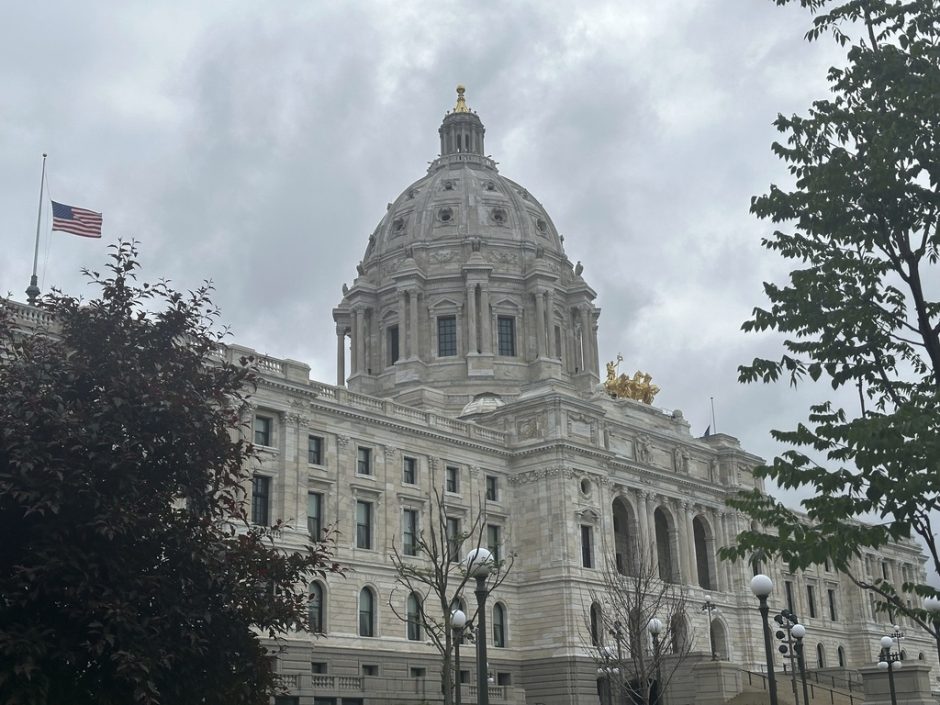WASHINGTON — The U.S. Senate released its version of the ‘big beautiful bill’ that would help implement President Donald Trump’s agenda, and the state’s hospitals — especially those in rural areas — could be among the biggest losers in the legislation.
Last month, U.S. House Republicans approved a massive package of tax and spending cuts projected to result in 7.8 million fewer Medicaid enrollees and is expected to cost Minnesota about $500 million a year in lost Medicaid revenue. The cuts in the House bill would come from the imposition of new work requirements that are expected to reduce enrollment.
The Senate’s version of the budget bill would also impose work requirements but slice even deeper by capping the amount of provider taxes states charge hospitals and doctors to 3.5%. The House bill had set the cap for the provider tax at 6%.
By charging providers a tax and reimbursing them for that money through higher payments for their services, Minnesota and about 40 other states are able to boost the money they receive from the federal government from Medicaid, which is a shared state-federal program.
The proposed cap provoked outcries from groups that represent the nation’s hospitals.
“The Senate just made a bad bill worse,” Chip Kahn, CEO of the Federation of American Hospitals, said in a statement. “Rural communities would take the hardest hit, with struggling hospitals compelled to face difficult decisions about what services to cut.”
Rural areas disproportionately rely on Medicaid, and their hospitals are often the only resort for patients without health coverage.
In Minnesota, the provider tax is currently set at 1.8%, among the smallest of all states. But the state has recently approved a budget that would impose a new Medicaid Directed Payment Program on participating hospitals, effectively raising the provider tax to 5.75% on participating facilities to leverage $1 billion from the federal government to help struggling hospitals.
Mark Jones, executive director of the Minnesota Rural Health Association, said the U.S. Senate budget bill could upend plans for a new directed payment program, which has to be approved by the Centers for Medicare & Medicaid Services (CMS.)
“It’s not beneficial to our rural health care providers at all,” Jones said of the Senate legislation.
The Senate’s cap on the provider tax would apply to states like Minnesota that had expanded Medicaid to higher-income individuals and families under the Affordable Care Act. The cap would require states to gradually reduce their taxes down to meet the 3.5 % threshold by 2031, so Jones said he hoped Minnesota’s plans to increase the tax could be “grandfathered” and implemented until the deadline.
The Minnesota Hospital Association, in a statement, said: “We are closely monitoring developments in Washington.”
The Minnesota Department of Revenue could not be reached for comment.
A sweet deal
Among the winners in the Senate budget bill are Minnesota’s farmers, especially those who raise sugar beets who would benefit from larger federal payouts.
Both the House and Senate versions of the legislation include a provision that has been at the top of beet sugar and sugar cane farmers’ wish list – the largest loan rate increase in decades.
The American Sugar Alliance, which represents the nation’s beet sugar and cane sugar farmers, hailed the provision.
“Since the expiration of the 2018 Farm Bill two years ago, sugar beet and sugarcane farmers have been pressing Congress to update and improve the farm safety net,” the alliance said in a statement. “We thank (Senate Agriculture Committee) Chairman John Boozman and his colleagues for including in the reconciliation package necessary updates to the Farm Bill sugar provisions which have received strong, bipartisan support in past Farm Bill deliberations.”
The U.S. Department of Agriculture’s sugar program is a price support program.
The USDA makes loans to sugar processors based on collateral – which is a certain amount of sugar. If those processors don’t get enough money from the sale of their sugar, they forfeit the sugar to the USDA.
The USDA generally doesn’t want sugar forfeitures; it wants sugar processors to sell and profit enough to be able to pay back the loans.
So, by increasing the loan rate — in this case from 19.75 cents to 24 cents per pound — the USDA is incentivized to try to boost sugar prices high enough to make sure there are no forfeitures. One way the USDA boosts prices is through import restrictions.
But the USDA’s attempts to boost sugar prices are opposed by food processors that use sugar, including General Mills, a company that is now aiming to decrease the use of sugar in its cereals.
A SALTy problem
Meanwhile, an unresolved issue in the Senate budget reconciliation bill is what to do about the state and local tax deduction (SALT) issue.
The House bill had increased the cap of $10,000 that’s currently placed on taxpayers who want to deduct state and local tax payments from their federal income taxes to $40,000.
But the Senate does not want to raise the cap.
The Senate hopes to vote on the bill next week. But that bill is required to go back to the House for approval, and the SALT cap has emerged as a poison pill.
A group of House Republicans from “blue” states with high costs of living and high state and local taxes say they won’t vote for the budget bill unless the SALT cap is set at $40,000.
There’s some talk of keeping the $40,000 cap, but restricting how many higher-income households can benefit. The House bill set that limit at households earning less than $500,000.
However, there is no deal yet and the SALT deduction has become a main stumbling point in plans to send President Donald Trump a budget bill by July 4.
In case you missed it:
-Greater Minnesota reporter Brian Arola wrote about the Trump administration’s plans to shutter the Digital Equity Act, a program created to promote the expansion of broadband into underserved areas like rural Minnesota.
-In the wake of the assassination of state Rep. Melissa Hortman and her husband, we wrote about an increase in political violence across the country.
-Also in a follow-up to the slayings, we reported on a Congressional plan to shelve the FACE Act, a federal law designed specifically to protect abortion providers from violence. Alleged killer Lance Boelter had a “hit list” that included the names of abortion providers and abortion rights activists.
-We shared an AP story about federal charges in the Hortman deaths that could lead to the death penalty for Boelter. He faces state charges, too, but Minnesota doesn’t have the death penalty.
-The AP also talked with U.S. Sens. Tina Smith and Amy Klobuchar about the prospects for heightened security for lawmakers in the wake of the Minnesota killings, which appear to have been politically motivated.
Your questions and comments
A reader took issue with President Donald Trump’s statement about the assassination of Rep. Melissa Hortman and her husband and the shooting of Sen. John Hoffman and his spouse. Unlike others, Trump failed to call the attacks “politically motivated” and heaped praise on Minnesota, a state that he had previously criticized.
“First, Trump’s history of dishonesty makes one question whether he actually believes anything he says,” the reader wrote. “His statement claims to think Minnesota and Minnesotans being great is clearly false. What he did not say is more telling — very deliberate and self-serving. Angry men with guns — not a group he is willing to antagonize.
Please keep your comments, and any questions, coming. I’ll try my best to respond. Please contact me at aradelat@minnpost.com.
The post Minnesota’s rural hospitals may be hard hit by ‘big beautiful bill’ appeared first on MinnPost.













































